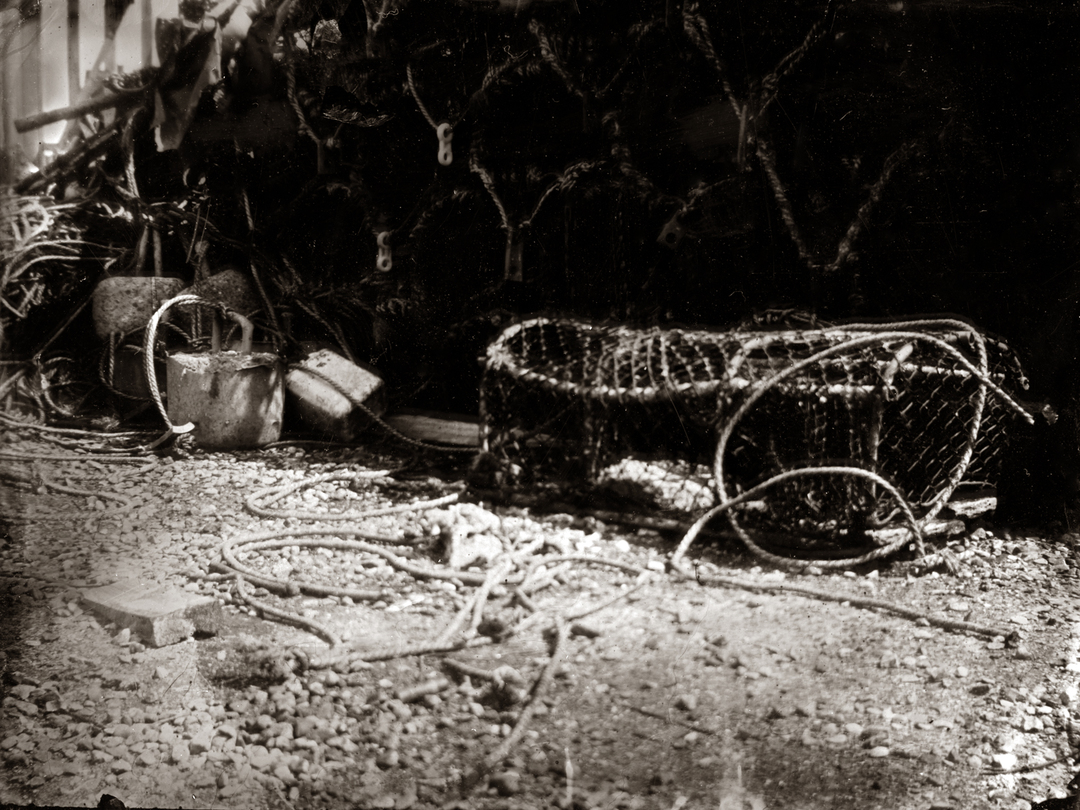Documenting Britain
McArthur’s Store is an ongoing award-winning series of portrait and documentary work made within the dwindling fishing community of Dunbar, a small town on Scotland’s Eastern Seaboard.
Wet Plate Collodion
February 15, 2015

Wet plate collodion is a photographic process dating from 1851 and was the primary method of capturing images on glass or metal plates from the early 1850s until the 1880s. It is a wet process and must be completed before the plate dries, roughly ten minutes or so in our British weather (we don’t really have a climate here, only weather); this brings an involvement, an intensity, often producing mercurial and unique images.
I attended a lecture at Edinburgh College of Art by the photographer David Gillanders in late 2009 or so, where I snuck in to see his incredible work on the desperate plight of the Ukrainian street children. At the end he showed a few sepia images of boxers (a subject I am passionate about) and passed a small bottle around. I sniffed it and was immediately thrown back to being a little boy: my father is a veterinary surgeon and used something that smelled like this to put the animals to sleep for surgery, something I attended over and over. Ether came to mind though I was not sure. I found its smell beguiling. The bottle contained collodion.
So, what exactly is it? Well, it is in essence a fantastically pungent liquid that assists a light sensitive solution of silver nitrate to adhere to a substrate of (usually) metal or glass. Stinks of ether because it contains ether: I had a deep headache that first summer and didn’t complain about it once. That summer I made precious little portraiture; the weather was terrible and the exposure time for portraiture was impossibly long in the rain. I’m not drawn to artificial light; I went to Dunbar because it faces north. Anyroad, I settled into a rhythm of recording the fishermen’s lives, the creels, their work and their detritus.
These first plates I made with a Kodak Brownie, bought from a market in Edinburgh for £4. I still have it; photographer Katie Cooke told me about the wee ledge on which the plate can sit, the spring on the back of the door, the possibility of complete failure versus the impossibility of precise success. I have Katie to thank for teaching me many things though mostly by kicking the cats out of her bathroom, locking me in, lighting a cigarette and shouting instructions for how to mix chemicals though the door.




